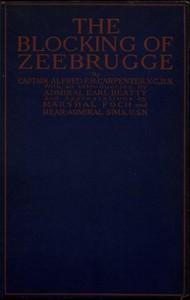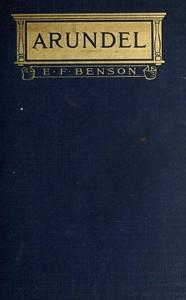|
|
Read this ebook for free! No credit card needed, absolutely nothing to pay.Words: 73198 in 26 pages
This is an ebook sharing website. You can read the uploaded ebooks for free here. No credit cards needed, nothing to pay. If you want to own a digital copy of the ebook, or want to read offline with your favorite ebook-reader, then you can choose to buy and download the ebook.

: The Blocking of Zeebrugge by Carpenter Alfred Francis Blakeney - World War 1914-1918 Naval operations British; Zeebrugge-Ostend Raids 1918 World War I@FreeBooksWed 07 Jun, 2023 ates of the tide. Mention has already been made that the only harbours on the coast eastward of Nieuport were situated at Ostende, Blankenberghe, and Zeebrugge. But these were not natural harbours. They had been artificially cut out of the coast-line by means of dredging. The entrance channels were preserved by piers built out into the sea and by dredging operations designed to retain the desired depths of water. Ostende, before the war, had been much used as a commercial harbour, and was therefore provided with numerous wharves, basins, and docks. It was a suitable harbour for all classes of submarines and torpedo craft. Blankenberghe was a little harbour about nine miles east of Ostende and three miles west of Zeebrugge. Its depth was exceedingly small; it could, therefore, only be used for shallow draught vessels such as fishing boats, motor boats, and the like. It was true that the rise of tide, amounting to approximately fifteen feet, would enable larger vessels to enter or leave near the time of high water, but any naval vessel stationed in a harbour from which it can only proceed to sea during a limited portion of the twenty-four hours at once loses much of its value. Zeebrugge could accommodate vessels up to a considerable size: the harbour works and depths will be described in detail presently. Although these three places provided the only harbours on the coast, there was a harbour of great importance at Bruges, about eight miles inland from Zeebrugge. Bruges harbour was also entirely artificial, consisting of locks, basins, and waterways built on the canal system. Bruges was connected to the sea by means of canals running to Zeebrugge and Ostende, these canals converging on the waterways of Bruges in such a manner that vessels of a certain limited size could pass from Ostende to Zeebrugge, and vice versa, without actually proceeding into the open sea. A series of small canals also connected Bruges to Antwerp, via Ghent, but this canal system, being only constructed to accommodate barges, did not materially add to the value of Bruges as a harbour for sea-going vessels. Of the three canal systems connecting at Bruges, the canal to Zeebrugge easily held first place in importance. This canal was built by the Belgians. It was commenced in 1896 and completed in 1907. Six and a quarter miles in length, it was almost entirely straight throughout. It could accommodate torpedo-boat destroyers or submarines, both of the largest size, and could, if required, have been used by light cruisers. At the seaward end of the Ostende and Zeebrugge canals, locks were constructed so that vessels could pass from the canals to the sea, or the reverse, at any state of the tide, without lowering the level of the water in the canal. The above-mentioned harbours were used for naval purposes by Germany as follows. Bruges was chosen as the main naval base. Shelters for protecting submarines from aerial attack, floating docks, repair workshops, all the other facilities which go to make a modern dockyard for small vessels, and the necessary stores and ammunition, were to be found there. The number of naval craft based on Flanders appeared to vary considerably; but, at the beginning of 1918, approximately eighteen submarines and twenty-five destroyers or torpedo-boats would be at Bruges on an average day. The submarines lay in the special shelters which were covered by roofs of re?nforced concrete several feet in thickness. Bruges, then, was not only the dockyard but also the resting-place of practically all the German naval craft based on Flanders. The sea exits from Bruges, as already mentioned, were situated at Ostende and Zeebrugge. There was some doubt, however, whether the Bruges-Ostende canal could be used for the passage of anything larger than very shallow draught vessels such as motor boats or barges. The Ostende canal was known to be narrow, tortuous, and shallow; it had been constructed many years earlier than the Zeebrugge canal. At Zeebrugge and Ostende a few German craft were usually stationed for duties of an immediate nature such as mine-sweeping, patrolling, and duties connected with the defence of the coast. These harbours were specially useful as taking-off places for vessels which had concentrated in readiness for operations at sea, or as bolt-holes for the same craft when pursued by our patrol vessels. Both harbours were open to bombardment from the sea; that reason, more than any other, probably influenced the Germans to use Bruges for their main base. Ostende, being more open to attack from the sea and air than was Zeebrugge, was the less important harbour of the two. Blankenberghe harbour, owing to its small size and shallow depth, was used as a base for the German armed motor boats; it is believed that about thirty were stationed there. This harbour, being unconnected with the canal system, was not in direct inland communication with Bruges by water. In addition to the submarines and torpedo craft already mentioned, the Germans had a large number of trawlers based on the various harbours for mine-sweeping and patrol duties. At Zeebrugge they had their largest seaplane base in Flanders; another seaplane base was situated at Ostende. In due course Flanders had become a veritable hornet's nest. Let us consider for a few moments to what extent these hornets could trouble us. Free books android app tbrJar TBR JAR Read Free books online gutenberg More posts by @FreeBooks

: Waverley by Scott Walter - Historical fiction; Jacobite Rebellion 1745-1746 Fiction@FreeBooksWed 07 Jun, 2023
|
Terms of Use Stock Market News! © gutenberg.org.in2025 All Rights reserved.






